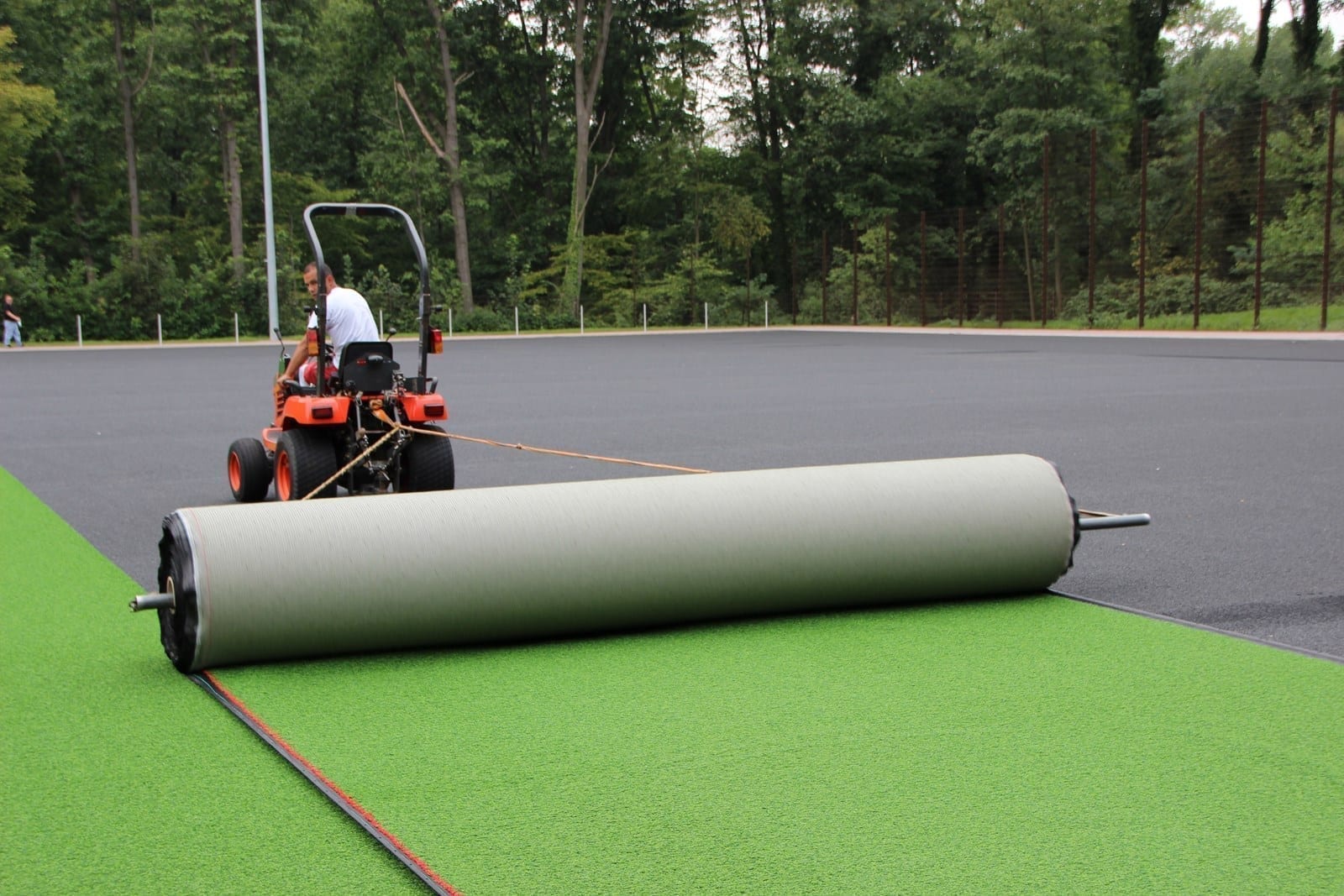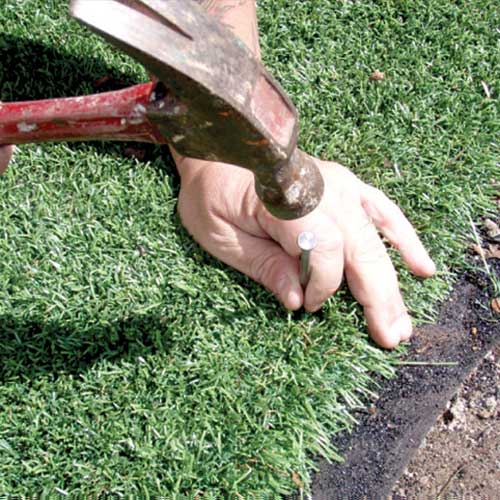See Why Homeowners Prefer Synthetic Grass for Lasting Landscape Design Practices
As homeowners progressively focus on sustainability in landscape design, synthetic grass has actually become a compelling alternative to conventional turf. Its capability to save water, minimize upkeep efforts, and reduce environmental effect settings it as a functional option for those looking for environmentally friendly options. The visual allure and convenience of synthetic turf provide to diverse design choices. The implications of this change prolong beyond plain ease and appearances, motivating a more detailed assessment of exactly how these choices affect broader ecological results. What remains to be explored is the complete scope of advantages that synthetic grass can use to house owners and the environment alike.
Water Conservation Perks
Among one of the most substantial advantages of artificial lawn is its role in water conservation. Standard yard yards require considerable amounts of water to preserve their lavish look, typically bring about overuse of neighborhood water resources, especially in arid regions. In contrast, man-made lawn removes this need totally, as it does not call for watering. This not just preserves water yet additionally reduces the strain on community water systems, particularly during drought conditions.
Additionally, the setup of man-made grass can contribute to a more lasting landscape. Home owners can dramatically decrease their water expenses, enabling reallocation of resources to various other ecological efforts or home usages. In addition, man-made turf is designed to withstand numerous weather conditions without the demand for extra watering, making it a suitable option for regions encountering water shortage.
The environmental advantages prolong past instant water savings. By lowering water usage, artificial lawn helps to minimize the effects of climate adjustment, protecting vital ecosystems that are intimidated by excessive water removal. As sustainable landscaping techniques acquire traction, synthetic lawn emerges as a liable choice for home owners seeking to produce environment-friendly outdoor areas.
Lowered Maintenance Efforts
Fabricated turf dramatically reduces maintenance initiatives contrasted to traditional turf yards. With artificial turf, house owners can remove the time-consuming jobs linked with all-natural landscaping, such as mowing, fertilizing, and weeding. This not only conserves useful time but also decreases physical labor, making yard treatment accessible for individuals of all ages.
Traditional lawns require constant trimming to maintain an aesthetically pleasing height, whereas man-made grass continues to be constantly rich without the need for reducing. In addition, house owners no longer need to use chemicals or plant foods, which are typically required to maintain all-natural turf healthy.
In addition, fabricated grass is resilient and sturdy, calling for marginal upkeep past occasional cleaning and rinsing to get rid of debris. This ease of upkeep enables property owners to appreciate their outside rooms without the constant fear of maintenance, giving even more time for recreation and family activities. Eventually, the minimized upkeep efforts related to synthetic grass make it an attractive choice for those seeking a low-maintenance, visually appealing landscape.

Environmental Influence Reduction
There is an expanding recognition of the ecological benefits connected with synthetic lawn, particularly in regards to water conservation and minimized chemical usage. Standard grass need substantial amounts of water, specifically in drought-prone regions, causing raised stress on neighborhood water resources. On the other hand, fabricated grass removes the need for irrigation, substantially decreasing water intake and advertising sustainability.
Additionally, traditional yard upkeep often involves the application of plant foods, pesticides, and herbicides, which can add to soil and water pollution. Man-made lawn minimizes this environmental hazard by requiring minimal upkeep and practically getting rid of the demand for harmful chemicals. This not only enhances soil health but also look at this site protects local communities from hazardous overflow.
Furthermore, the production of natural grass yards typically involves making use of fossil gas for trimming and landscape design devices, additional adding to greenhouse gas discharges. By choosing artificial turf, property owners can considerably reduce their carbon footprint related to yard care activities.
Visual Allure and Versatility
Along with its ecological benefits, synthetic grass supplies significant visual allure and versatility for landscaping. Home owners can achieve a lush, eco-friendly look year-round, eliminating the seasonal fluctuations frequently connected with natural turf. This constant visual not just boosts the aesthetic appeal click to find out more of a building yet also contributes to a properly maintained and sleek appearance.
In addition, artificial turf is available in a range of shades, designs, and appearances, permitting modification to match private choices and style styles - Arizona artificial turf. Whether utilized in property gardens, industrial spaces, or entertainment locations, it can flawlessly incorporate into diverse landscape design styles, from contemporary minimalist to lush exotic setups
The flexibility of synthetic lawn expands past mere look; it can be set up in various areas, consisting of rooftops, patio areas, and even interior areas, producing opportunities for one-of-a-kind landscaping solutions. In addition, it appropriates for a series of tasks, from children's play locations to pet-friendly settings, offering capability without jeopardizing design.
Eventually, the aesthetic charm and flexibility of artificial lawn make it an attractive alternative for property owners looking for sustainable landscaping remedies that do not compromise elegance for environmental obligation.

Long-Term Expense Financial Savings
Among the most compelling benefits of synthetic grass is its possibility for long-term price savings. Unlike all-natural grass, which calls for regular upkeep-- including mowing, watering, feeding, and pest control-- man-made turf substantially reduces these recurring expenses. House owners can save a substantial amount on water costs, especially in regions where water shortage is a pushing issue. The elimination of yard treatment solutions even more adds to economic cost savings, as there is no need for specialized equipment or labor.
In addition, fabricated lawn has a lifespan of 15 to 25 years, depending on its quality and usage. This sturdiness decreases substitute prices, making it an extra affordable selection in the future. In addition, the first financial investment in artificial lawn can often be redeemed via the financial savings built up with time.
While the in advance cost may seem greater contrasted to sod installation, the cumulative financial savings from minimized maintenance and water usage usually surpass these preliminary expenditures. Inevitably, the fostering of synthetic turf not just promotes a lasting landscape design service but likewise provides property owners a monetarily wise choice that straightens with long-lasting budgeting goals.
Final Thought
Fabricated lawn emerges as a compelling option for sustainable landscaping, supplying substantial advantages in water conservation, minimized maintenance efforts, and diminished environmental impact. As communities increasingly prioritize environmentally friendly methods, the fostering of man-made grass stands for a modern step toward achieving resistant and lasting landscapes.
In addition, man-made grass is created to stand up to different climatic look these up conditions without the demand for supplementary watering, making it an ideal selection for areas dealing with water scarcity. (Arizona turf)

Synthetic lawn emerges as a compelling alternative for sustainable landscape design, using significant benefits in water conservation, reduced upkeep efforts, and lessened ecological impact.